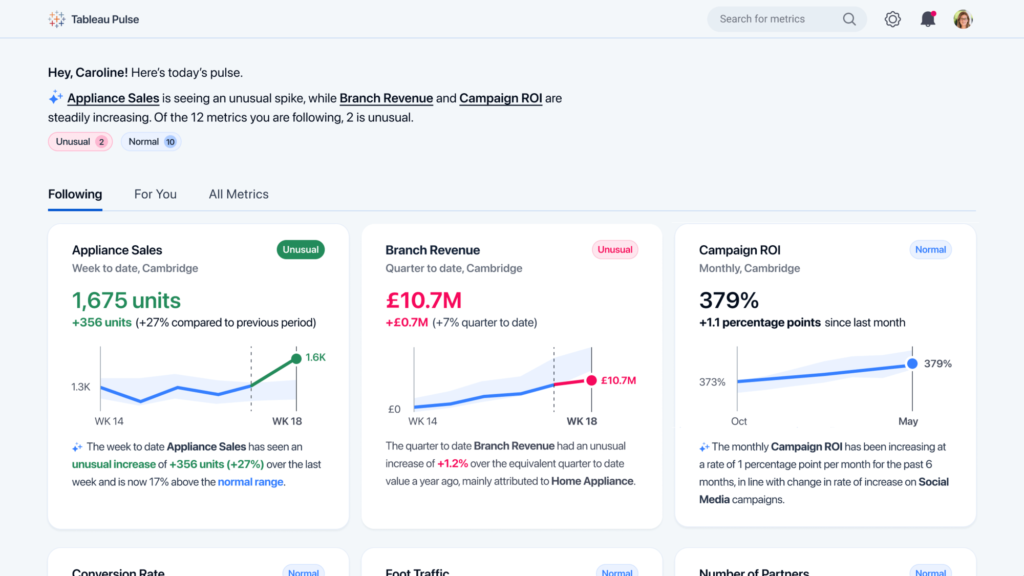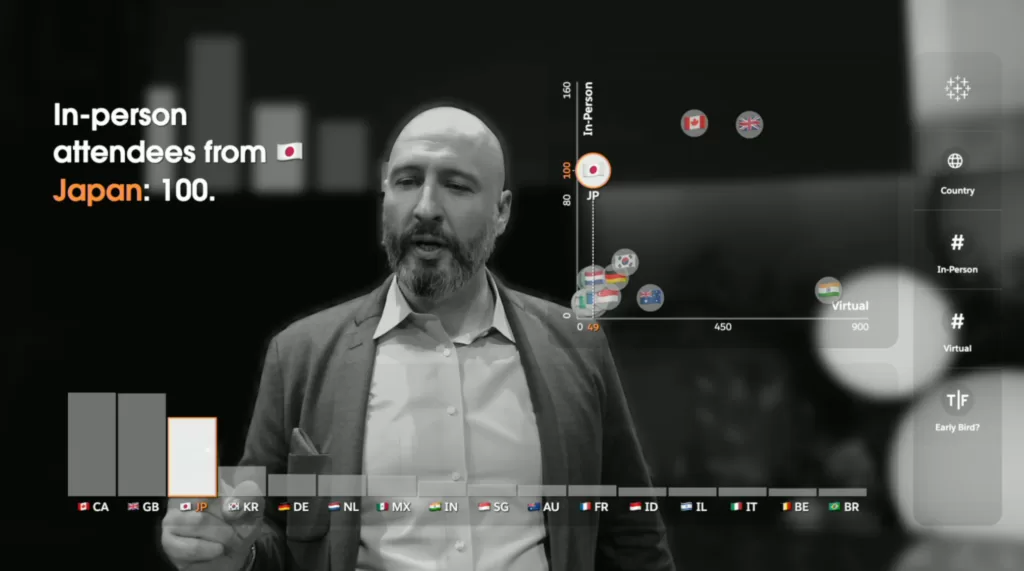Introduction
Every year, the Tableau Conference brings together data enthusiasts, analysts, and professionals from around the world to dive into the realm of data visualization and analytics. We all met at the Mandalay Bay Hotel and Conference Center in Las Vegas for this year’s rendition. This immersive event serves as a hub of innovation, where like-minded individuals gather to explore the latest trends, techniques, and tools that empower them to extract meaningful insights from data. In this blog, we’ll embark on a virtual journey into the Tableau Conference, discovering its highlights and the transformative experiences it offers.
For the initial keynote, I sat on the floor with the other Tableau Ambassadors and Visionaries. This was something new to me. As a leader of the Portland Tableau User Group, I was identified as an ambassador. This was quite an honor. However, with that honor comes responsibility to stay up to date with the latest and greatest in Tableau Development.
So, what are the highlights?
With fresh product details and company roadmaps from Tableau (and Salesforce), TC23 aims to disclose and inspire. More importantly, TC23 talks included a wide range of technical subjects, case studies, thought leadership, interesting demos, community motivation, and practical learning.
Here, we will briefly go over the keynote address and touch on some recent product developments for Tableau before concentrating on the major points from a variety of TC23 sessions. These highlights also act in part as a check list for upcoming learning and review because some of these sessions are recorded. There were several items that really caught my attention: generative AI with that Tableau GPT and Tableau Pulse and Tableau Gestures.
Generative AI
First, let’s discuss generative AI, also referred to as GPT or [insert phrase here]. These days, it is difficult to read anything in the analytics industry without generative AI being mentioned. The narrative is being dominated by this technology, which is being used in use cases and technological demonstrations. What does Tableau have planned for generative AI, then? Everything is around giving context and assisting the user on their analytics journey. Those who have spent the last few years in the Tableau universe may view this as a relaunch of capabilities like Ask Data, with a stronger technological punch.
Enter Tableau GPT
By utilizing the cutting-edge capabilities of generative AI to streamline and democratize the data analysis process, Tableau GPT is a paradigm-shifting innovation. The trustworthy ideas of Einstein served as the foundation for this new version of Tableau, ensuring its dependability and everyone who utilizes its safety. The key benefit of Tableau GPT is its capacity to improve each component of the Tableau platform to promote performance, efficiency, and scale.
Tableau GPT will be a services layer that combines many big language models to deliver data back to Tableau products. It is not dependent on a single source, such as OpenAI, but rather an amalgamation of many. Any variety of models may be invoked, depending on the task, to produce the response. When you are looking at a dashboard, it can tell you what you are seeing and what is causing that change. This is much more helpful than trying to incorporate everything into dashboard mechanisms and hoping the user finds them.
For data analysts, Tableau GPT automates data preparation, analysis, and governance while offering users in-product assistance and contextual instructions. By eliminating the technical barrier to entry and automating repetitive operations, Tableau GPT will streamline and simplify current analyst workflows. We enable calculations in natural language and provide suitable charts using the power of generative AI.
Enter Tableau Pulse
Tableau Pulse, a reinvented data experience for analytics consumers that will enable every employee with smart, tailored, and contextual insights provided right in their flow of work, is made possible by Tableau GPT. Tableau Pulse changes how people interact with their data in more meaningful ways, enabling all employees in an organization to become data driven. This will be especially useful for users who don’t have time to learn new tools, need data right away to make decisions, and want to grasp the “why” of data beyond its “how” and “what.”

By offering data digests in your workflow and a user-friendly, customizable metrics homepage that you can customize to your needs, Tableau Pulse alters this. It’s no longer necessary to filter a dashboard in five different ways to discover the numbers you care about; instead, you can now access your chosen critical KPIs in a straightforward, curated newsfeed-style interface. As Pulse gains insight into the insights that matter most to you, this experience will eventually produce more personalized results.
Tableau Pulse helps organizations to automate analysis and share insights in simple, natural language, allowing for a more intelligent use of data. First, Tableau Pulse handles the labor-intensive work for you by guiding you past the “what” and toward the “why.” Insights are automatically detected and generated by Pulse, which also proposes questions you might not have thought to ask and anticipates questions you might ask. Then, Tableau GPT provides a conversational summary of the insights. This will save you time by allowing you to quickly analyze data rather than manually analyze it.
So, Tableau Pulse really reminds me a lot of Auto Insights which is a cloud tool offered by Alteryx. It will be interesting to see how both products fare in the marketplace. This just further supports the theory that the race toward analytics supremacy in the Cloud is becoming even more intense.
Tableau Gestures
Tableau Gestures was perhaps the ‘neatest’ feature demonstrated. The Tableau Research team had previously proposed that this would provide everyday people the ability to gesture control their data. This is sick! This gives an entirely new meaning to interactive demonstrations. It was cool to look at, but it may be an iteration or two away from being ready for primetime. It is a huge step in the right direction.

Conclusion
It was very exciting to see how Salesforce is integrating AI into Tableau. I am encouraged by Tableau GPT. Since being acquired by Salesforce, TC seemed to have shifted to more of a sales event rather than the technical event that it has been in years’ past. This is something that I mentioned to the new CEO, Ryan Aytay. Obviously, sales are important, but leaving TC with new knowledge of how to use and apply Tableau is much more important. Offer more technical breakouts and focus more on how to do “cool” things in Tableau. If Tableau developers are of all skill levels can go to TC and bring back new knowledge to apply to their jobs, it would justify a return trip the following year. Salesforce, you have a cult following with the Tableau Community. Give them what they crave, which is arming us with new tools and new ways to build the best visualization for our customers.
By Chris Williams
Alteryx ACE, Certified Alteryx Partner,
and Tableau Ambassador


